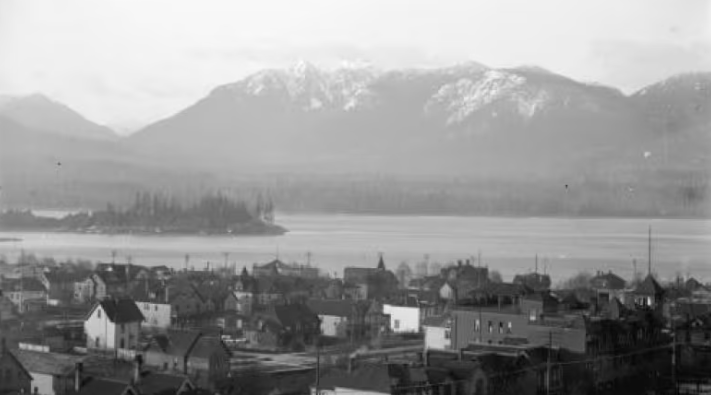Vancouver’s attitude towards snow hasn’t changed in over 100 years, says historian

City helped shaped Vancouver’s image after its incorporation as a place with mild winters to draw visitors
Snow seems to bring out the worst in Vancouver, with stalled buses, spun out cars, and a city paralyzed by a few centimetres blanketing the ground.
It’s a phenomenon historian Blake Butler calls “the evergreen mentality,” or Vancouver’s lack of preparedness and denial of annual snowfall events.
“It’s the idea that Vancouver is a place devoid of snow, when in fact it’s part of the coast’s climate, albeit not as much as the rest of Canada,” he said.
Butler, a historical researcher with Know History in Ottawa, dove into Vancouver’s history to understand its relationship with snow for his 2023 PhD dissertation.

In it he reveals the impact snow has had “on a seemingly snowless place,” from the city avoiding costly snow removal to seeing a boom in mountain-based winter businesses.
“It’s very easy to overlook snow in Vancouver because we typically don’t get it that frequently,” he said, adding Vancouver’s attitude toward snow today is the same as it was 100 years ago.
Perception vs. reality
Butler says he discovered Vancouver has received snow nearly every year since the 1850s — but its image suggests otherwise, with many perceiving it as a mild, rainy city.
“When it does snow in Vancouver … it’s often very short-lived,” he said, “but it does snow every year.”
He credits the City of Vancouver and large corporations for the city’s image, promoting it after its incorporation in 1886 as having temperate winters to draw people in.
Even the media, as far back as 1901, described snow as something that “comes quickly and disappears more quickly” in Vancouver, Butler says, resulting in its winter image as “Canada’s evergreen playground.”
“[They] really downplayed the idea that snow was on the coast [and] redefined it as something that was unnatural,” he said.
“There are more winters with snow than without snow, but attitudes have generally remained the same.”
This belief, along with the expectation that rain would soon follow snow, has played a role in how people in the city have managed snow events, he says.
Of a particular snow day in 1911, reporters for The Province wrote, “the visitor from the prairies will soon make itself scarce” after rain arrived in a day or two.
An article from the same newspaper in 1927 said rain was “Vancouver’s 100 per cent street cleaner,” and another 1911 story said the average homeowner believed “in letting nature take its course” when it comes to dealing with snow.
These seem to have led Vancouverites to become complacent when it comes to preparing ahead for snow, including shovelling their sidewalks, Butler says.
Even the City of Vancouver, he adds, failed to follow or reinforce city bylaws when it came to street and sidewalk cleaning until the late 1920s, due to its costly nature.

It’s no secret that Vancouver faces challenges every time it snows. And apparently things haven’t changed in over a hundred years. We talk to Blake Butler, who wrote his PhD history thesis on Vancouver’s relationship with snow.
The amalgamation of Vancouver, South Vancouver and Point Grey in 1929 forced the city to buy sanding trucks as its first pieces of modern machinery to manage roads and winter weather, he says.
Meanwhile, the opposite was expected when it came to the southern Coast Mountains, where snow allowed businesses to flourish.
“Snow really connected people throughout the 20th century with the mountains … [especially] the development of the ski industry and ski culture,” he said.
He adds that easy access to fresh drinking water and hydroelectricity from mountain snowmelt, since the late 19th century, has allowed Vancouver to grow “from a small outpost … into a burgeoning metropolis.”
Nevertheless, Butler says, Vancouver gets the best of both worlds for lovers and haters of snow.
“If you enjoy it, go out and and have fun,” he said, “and if you hate it, you can wait it out usually.”
Related News
Firings of U.S. federal workers begin as White House seeks to pressure Democrats in government shutdown
Several federal departments, including treasury and health and human services, are likely to be affectedRead more
U.S. stock markets tumble after Trump says he’s raising China tariffs to 100%
A trader works on the floor at the New York Stock Exchange in New YorkRead more

